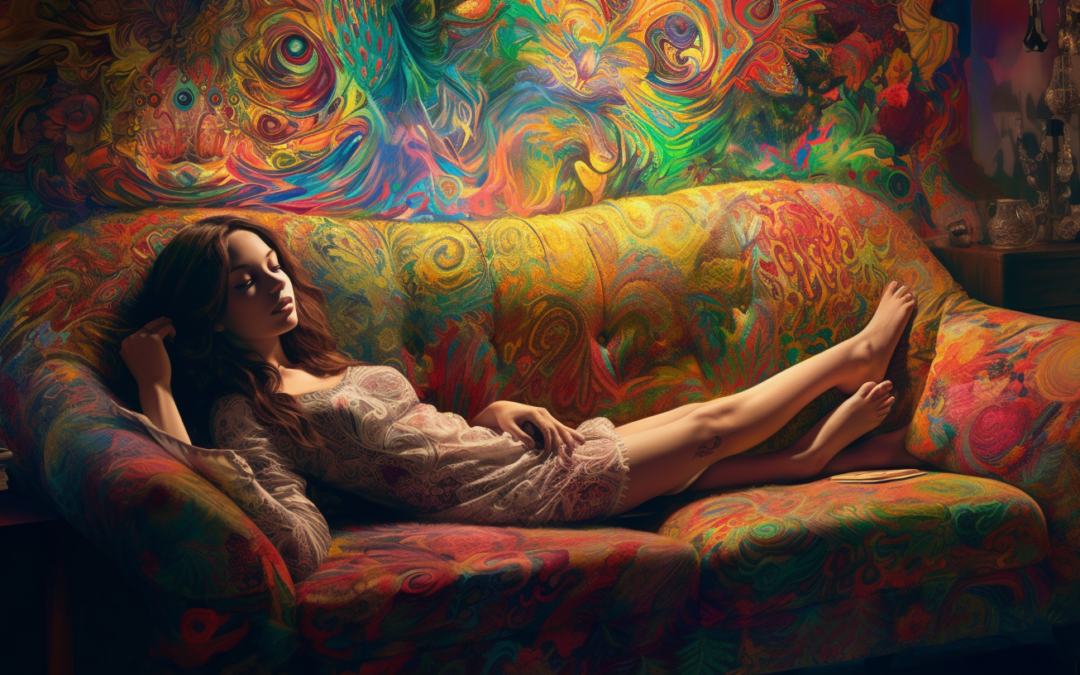The Influence of Set and Setting
The last decade has witnessed a resurgence in interest towards psychedelic substances such as psilocybin, largely driven by emerging evidence of their therapeutic potential. While their pharmacological effects have been the focus of much research, the equally significant influences of non-pharmacological factors, particularly ‘set’ and ‘setting’, are also deserving of attention. Set, which pertains to the individual’s internal state, and setting, which relates to the surrounding environment, can shape the overall psychedelic experience to a remarkable extent.
The Role of ‘Set’
‘Set’ encapsulates an array of internal factors that can color a user’s psychedelic experience. It encompasses aspects such as the user’s mindset, emotional state, personal history, personality traits, and intentions for using the substance.
Mindset and Emotional State
The importance of an individual’s mindset and emotional state prior to a psilocybin session cannot be overstated. For instance, a person in a positive and optimistic mindset, coupled with a tranquil emotional state, may experience a sense of profound connection to the world, intense joy, and deep insights. On the other hand, individuals who are anxious or in a negative emotional state may have a distressing experience marked by fear, paranoia, or confusion. As an example, a study conducted by Carhart-Harris et al. in 2018, demonstrated that positive mood before psilocybin ingestion was associated with a more pleasant and mystical experience.
Personal History and Personality Traits
A user’s personal history, including their past traumas and mental health status, as well as their inherent personality traits, can also significantly impact their psilocybin journey. For example, someone with a history of severe anxiety might face heightened fear or paranoia during the experience. Furthermore, people with a personality trait like openness to experience might be more likely to have insightful or mystical experiences. A study published in the Journal of Psychopharmacology in 2017 showed that higher levels of the personality trait openness were associated with better experiences during psilocybin sessions.
Intentions for Use
The intentions a person has for using psilocybin can serve as a compass during the psychedelic experience. Someone aiming for self-exploration or spiritual growth might approach the experience with a sense of reverence and curiosity, thereby enriching the journey. Contrastingly, someone using psilocybin casually or recreationally without specific intentions may have a vastly different, and potentially more unpredictable, experience.
The Role of ‘Setting’
‘Setting’ refers to the external conditions during the psychedelic experience, including the physical environment, social milieu, cultural context, and the availability of professional guidance.
Physical Environment
The physical environment significantly affects the psilocybin experience. For example, a quiet, clean, and familiar place could foster feelings of safety and tranquility, thereby enhancing the psychedelic experience. By contrast, a noisy, messy, or unfamiliar place might breed discomfort and anxiety. A case study by Belser et al. (2017) emphasized the importance of a comforting setting in mitigating anxiety during a psilocybin session.
Here are some items and environmental factors that may enhance the setting:
- Comfortable Furniture: A comfortable couch, bed, or chair where the person can relax or even lie down is essential. Including blankets or pillows can also provide additional comfort.
- Eye Mask: An eye mask can be beneficial for users who want to focus on their internal experience and eliminate external distractions.
- Earplugs or Headphones: For those who want to minimize disruptive external noise, earplugs can be useful. Conversely, headphones can be used for listening to calm, instrumental music or guided meditations, which many find enhances their experience.
- Lighting: Soft, warm, and adjustable lighting can create a relaxing atmosphere. Some may prefer natural light, while others might opt for low artificial lighting. Candles can also contribute to a serene setting, but safety should be the priority.
- Temperature Control: The room temperature should be comfortable, as psilocybin can occasionally alter one’s sensitivity to hot or cold.
- Nature Elements: If possible, a setting with access to nature such as a garden or a view of trees can be soothing. Indoor plants or nature sounds can also add a calming ambiance.
- Artwork and Objects: Some people find inspiration in certain objects or visuals, such as peaceful paintings, tapestries, or sentimental items.
- Water and Snacks: Having water nearby is important to stay hydrated. Some users might also appreciate light, healthy snacks for after their session.
- Journal and Pen: Many users find it helpful to journal their experience as it unfolds or shortly after, as a way of documenting insights or feelings.
- Comfortable Clothing: Loose, comfortable clothing can help the individual feel at ease and unrestricted.
Presence of Others
The company during a psychedelic experience can deeply impact the journey. Having supportive, understanding, and calm companions can create a nurturing environment that may intensify positive experiences. For instance, in psilocybin trials for end-of-life distress, the comforting presence of trained therapists was found to enhance feelings of safety and acceptance, as documented in a 2016 study by Griffiths et al.
Cultural Context
The broader cultural and societal context can shape perceptions and interpretations of the psilocybin experience. For example, in societies where psychedelic use is normalized or viewed as a path to enlightenment, individuals may be more likely to have positive expectations and feel more comfortable during their experience. Conversely, in societies where psychedelics are stigmatized, users may feel anxious, guilty, or fearful, which could negatively impact their experiences. An anthropological study by Langdon and colleagues (2016) showed that cultural beliefs surrounding the use of psychedelics significantly influenced the user’s experiences, with more open cultures often reporting more positive and meaningful experiences.
Guidance
Professional guidance is becoming an integral part of the therapeutic use of psilocybin. This guidance often takes the form of psychedelic-assisted therapy, where trained therapists are present before, during, and after the psychedelic experience. The role of these therapists is crucial, as they can help individuals prepare for the experience, provide reassurance during the session, and facilitate integration afterward. For instance, a study by Johnson and Griffiths (2017) found that the presence of trained therapists during psilocybin sessions was associated with more positive outcomes and fewer adverse effects.
Moreover, therapists can help individuals to contextualize and extract meaning from their experiences, which is particularly valuable when dealing with challenging or confusing trips. The guidance of trained therapists can transform what might initially seem like a distressing experience into a profound opportunity for personal growth.
Conclusion
In summary, the profound influence of set and setting on the effects of psilocybin underscores the complexity and the multifaceted nature of the psychedelic experience. It’s not simply a matter of pharmacology; our minds and environments play significant roles in shaping these experiences. Understanding the importance of set and setting is crucial for harnessing the therapeutic potential of psilocybin and other psychedelic substances. As research continues to explore this field, there is hope for developing more refined guidelines for optimizing set and setting to further enhance the beneficial effects of these substances while minimizing potential risks.

